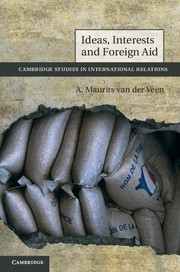Book contents
- Frontmatter
- Contents
- Figures
- Tables
- Preface
- 1 The many uses of foreign aid
- 2 One policy, multiple goals
- 3 Debates about aid
- 4 Aid frames
- 5 The administration of aid policy
- 6 The generosity contest
- 7 The popularity contest
- 8 Conclusion
- Appendix A Legislative debates coded
- Appendix B Debate coding examples
- Appendix C Aid distribution: data and sources
- Bibliography
- Index
6 - The generosity contest
determinants of aid volume
Published online by Cambridge University Press: 07 September 2011
- Frontmatter
- Contents
- Figures
- Tables
- Preface
- 1 The many uses of foreign aid
- 2 One policy, multiple goals
- 3 Debates about aid
- 4 Aid frames
- 5 The administration of aid policy
- 6 The generosity contest
- 7 The popularity contest
- 8 Conclusion
- Appendix A Legislative debates coded
- Appendix B Debate coding examples
- Appendix C Aid distribution: data and sources
- Bibliography
- Index
Summary
Norway loses lead to Denmark as accounts reveal foreign aid as percentage of GNP dropped drastically.
Norway again largest OECD donor, as emergency relief aid funds … grow rapidly.
– Headlines in Development Today, 1994 and 1995Aid levels of the OECD donor states have varied considerably over time, ranging from virtually nothing to well over 1 per cent of GNP. Interestingly, despite four decades of activity in standard-setting and monitoring of donor state performances, the OECD’s Development Assistance Committee shows no signs of producing convergence among individual donor states on the international norm of 0.7 per cent of GNP. Instead, aid levels in many donor states dropped throughout the 1990s, moving further away from the norm, before increasing again during the first decade of the twenty-first century, albeit without reaching the levels of the 1980s.
Explaining patterns in overall aid levels has proven difficult: neither changes in government composition nor the economic fortunes of the donor states correlate highly. The end of the Cold War may have had an impact, but if so, it was in the opposite direction of that expected: many observers initially predicted aid levels would rise as military expenditures declined. Some explained the declining levels by pointing to public disillusionment or to a waning political commitment, but arguments along those lines date back at least to the mid 1960s, making them poor explanations for trends several decades later. In this chapter, I argue that the impact of various explanatory factors depends crucially on the relative strength of different frames for aid. The data about the salience of these frames presented in Chapter 3 help us explain patterns in aid volume from the 1950s throughout the end of the twentieth century.
- Type
- Chapter
- Information
- Ideas, Interests and Foreign Aid , pp. 139 - 170Publisher: Cambridge University PressPrint publication year: 2011



